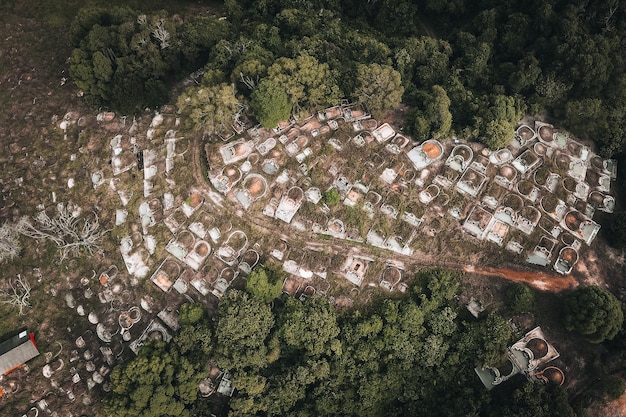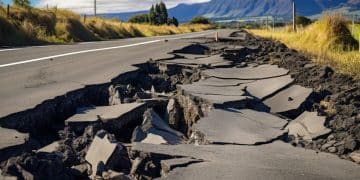Stafford act changes: Impact on US disaster assistance

The Stafford Act, a cornerstone of US disaster response, has undergone significant Stafford act changes to enhance preparedness, streamline assistance, and address evolving threats.
These amendments profoundly affect how federal aid reaches communities and individuals during emergencies. For decades, the Stafford Act has served as the foundation of federal disaster relief in the United States.
Understanding Stafford act changes and how they affect disaster assistance is crucial for communities, first responders, and individuals navigating the complexities of post-disaster recovery.
The Stafford act: Foundation and purpose
The Robert T. Stafford Disaster Relief and Emergency Assistance Act, commonly known as the Stafford Act, was enacted in 1988. It consolidated earlier disaster laws into a comprehensive framework.
Its primary goal is to provide federal assistance to states, localities, tribal nations, and individuals to supplement their efforts in responding to, recovering from, and mitigating the effects of major disasters.
This legislation empowers the President to declare a major disaster or emergency, unlocking a wide range of programs managed primarily by FEMA. Before these Stafford act changes, federal disaster response was often ad hoc and fragmented, lacking a centralized approach.
The Act standardizes processes, ensuring predictable mobilization of federal resources. It delineates assistance types, including emergency work, permanent repairs, individual aid, and hazard mitigation.
Understanding these foundations is essential to grasp the impact of subsequent Stafford act changes.
Evolution through amendments: Major legislative milestones
Over time, the Stafford Act has been revisited and amended to address new challenges and improve federal assistance. Each of these Stafford act changes reflects lessons learned from disasters and the evolving nature of threats.
Several key amendments broadened eligibility, introduced new programs, or refined existing ones to address hurricanes, floods, wildfires, and pandemics.
The cumulative effect of these Stafford act changes has been a continuous refinement of the federal government’s disaster management role.
The Disaster Mitigation Act of 2000 (DMA 2000)
DMA 2000 emphasized proactive measures by requiring states and local governments to develop hazard mitigation plans to receive certain federal funding.
- Integrated mitigation into broader disaster management.
- Encouraged community-level vulnerability assessments.
This marked a pivotal shift, acknowledging that rebuilding alone is insufficient. Reducing vulnerability to future disasters became critical, reflecting early Stafford act changes aimed at resilience.
Post-Katrina Emergency Management Reform Act of 2006 (PKEMRA)
PKEMRA strengthened FEMA’s authority after Hurricane Katrina. The amendment reorganized the agency, improved interagency coordination, and clarified roles.
These Stafford act changes ensured FEMA had autonomy and resources to lead national response effectively, addressing past failures in disaster management.
Disaster Recovery Reform Act of 2018 (DRRA)
DRRA introduced forward-looking Stafford act changes, including pre-disaster mitigation funding and a simplified recovery process.
The National Public Infrastructure Pre-Disaster Mitigation Fund was established to reserve disaster relief funds for future projects. The Act recognized that prevention saves multiple dollars in future recovery costs.
These Stafford act changes streamlined aid applications, reduced bureaucratic hurdles, and improved accessibility for communities and survivors.

Impact on individuals and households
Amendments to the Stafford Act reshaped assistance for individuals. Early aid focused on emergency relief, but Stafford act changes expanded support to encompass long-term recovery and stability.
Financial assistance through FEMA’s Individual and Households Program (IHP) became more flexible.
Application processes were simplified, and eligibility broadened to include temporary housing, essential property replacement, and support for vulnerable populations. These Stafford act changes aim to ensure survivors can rebuild with dignity.
Expanded eligibility for housing assistance
Recent Stafford act changes expanded housing support to renters and the homeless, emphasizing rapid transition to safe living conditions.
- Simplified applications for renters.
- Increased temporary housing funding.
- Culturally appropriate housing solutions.
Mental health and crisis counseling services
Amendments recognized post-disaster psychological trauma. Funding for mental health and crisis counseling became integral to recovery, another key set of Stafford act changes reflecting a holistic approach.
Implications for State and Local Governments
The Stafford act changes have redefined roles for state, local, and tribal governments. More autonomy and resources come with higher expectations for preparedness and mitigation.
Pre-disaster planning is now central. Disaster Mitigation Act of 2000 and DRRA made mitigation planning a funding prerequisite, forcing proactive local strategies.
Enhanced mitigation funding and requirements
States and localities gained greater access to pre-disaster mitigation funds. These Stafford act changes incentivize proactive measures like flood control, retrofitting, and resilient infrastructure development.
Streamlined access to federal resources
Federal resources became easier to access due to these Stafford act changes. Clearer guidelines accelerate recovery, demanding skilled emergency management teams at local levels.
Focus on hazard mitigation and resilience
The DRRA reinforced the shift to proactive hazard mitigation. These Stafford act changes prioritize community-wide resilience, integrating disaster risk reduction into planning, building codes, and economic strategies.
New funding streams for pre-disaster mitigation
Dedicated funding, including the National Public Infrastructure Pre-Disaster Mitigation Fund, is a significant Stafford act change, ensuring resources are used for risk reduction projects.
Integration of nature-based solutions
Nature-based solutions, such as wetlands restoration and floodplain preservation, now receive funding. These Stafford act changes combine environmental restoration with disaster protection, reflecting a holistic approach.
The role of technology and innovation
Technological advancements enhance disaster response efficiency. Drones, GIS mapping, and digital platforms optimize Stafford act changes in aid distribution, improving situational awareness, equity, and speed.
Advanced mapping and damage assessment tools
High-resolution imagery and GIS allow FEMA to deploy resources effectively. These tools are critical for implementing recent Stafford act changes in rapid damage assessment.
Digital platforms for aid applications
Online portals simplify applications, reduce bureaucracy, and speed assistance. Digital adoption embodies the latest Stafford act changes, making aid more accessible.
Challenges and future outlook
Despite improvements, challenges persist. Climate change, resource strain, and equitable recovery remain top concerns. Future Stafford act changes will likely emphasize scalable, climate-resilient strategies and fair access to assistance.
Addressing climate change impacts
More frequent disasters require Stafford act changes that integrate climate science, develop resilient infrastructure, and support early warning systems.
Ensuring equitable recovery
Equity-focused Stafford act changes aim to simplify access for marginalized groups, ensuring all populations benefit from federal assistance.
Navigating Disaster Assistance: Key takeaways
Understanding Stafford act changes is crucial for effective disaster preparedness and recovery. The Act has evolved into a sophisticated mechanism for federal aid, emphasizing proactive mitigation, flexible assistance, and equitable recovery.
From hazard mitigation to mental health support, the ongoing Stafford act changes demonstrate a federal commitment to resilience and human-centered disaster assistance.
Staying informed ensures communities and individuals can maximize available resources and recover more effectively from emergencies.
| Key Change | Brief Impact |
|---|---|
| ✅ More Mitigation Focus | Increased funding for pre-disaster projects to reduce future risks and costs. |
| 🤝 Streamlined Assistance | Simplified application processes and faster resource deployment for individuals and governments. |
| 👨👩👧👦 Expanded Individual Aid | Broader eligibility for housing, mental health support, and direct financial aid. |
| 🔬 Tech Integration | Utilizes drones, GIS, and digital platforms for faster assessments and aid distribution. |
Frequently Asked Questions (FAQ) about Stafford Act Changes
The Stafford Act’s primary goal is to provide a comprehensive legal framework for federal assistance to states, local governments, tribal nations, and individuals during major disasters or emergencies. It aims to supplement local efforts in response, recovery, and mitigation. This ensures a coordinated national approach to managing catastrophic events and supporting affected communities.
The DRRA significantly amplified the focus on pre-disaster mitigation. It established new funding streams, like the National Public Infrastructure Pre-Disaster Mitigation Fund, which allocates a percentage of disaster relief funds for future mitigation projects. This change encourages proactive measures to reduce risks and build resilience before disasters strike, rather than just reacting afterward.
Changes often lead to expanded eligibility for housing assistance, simplified application processes, and increased focus on unmet needs. Amendments have also brought a greater emphasis on providing mental health support and crisis counseling services to survivors, ensuring a more holistic approach to recovery that addresses both material and emotional well-being.
Technology plays a crucial role by enhancing damage assessment through drones and GIS, enabling faster response. Digital platforms streamline aid applications, making it easier for survivors to register and track their requests. These innovations improve the speed, accuracy, and equity of federal assistance delivery, creating a more adaptive and intelligent disaster response system.
Ongoing challenges include adapting to the increasing frequency and intensity of disasters due to climate change, ensuring equitable recovery for all communities, and continuously refining implementation complexities. Future revisions will likely focus on strengthening climate resilience, addressing disparities in aid distribution, and leveraging emerging technologies more effectively to meet evolving needs.





